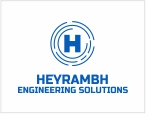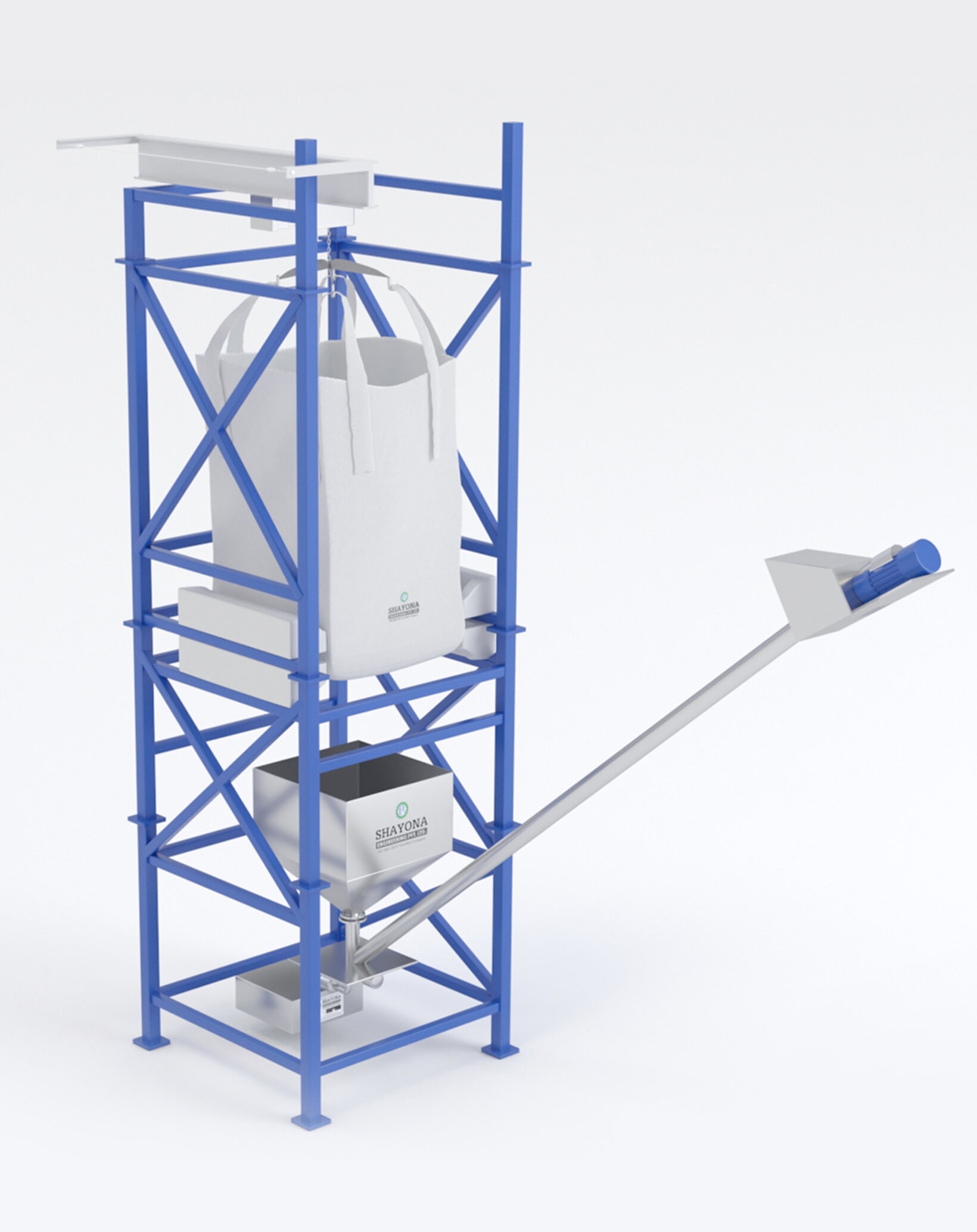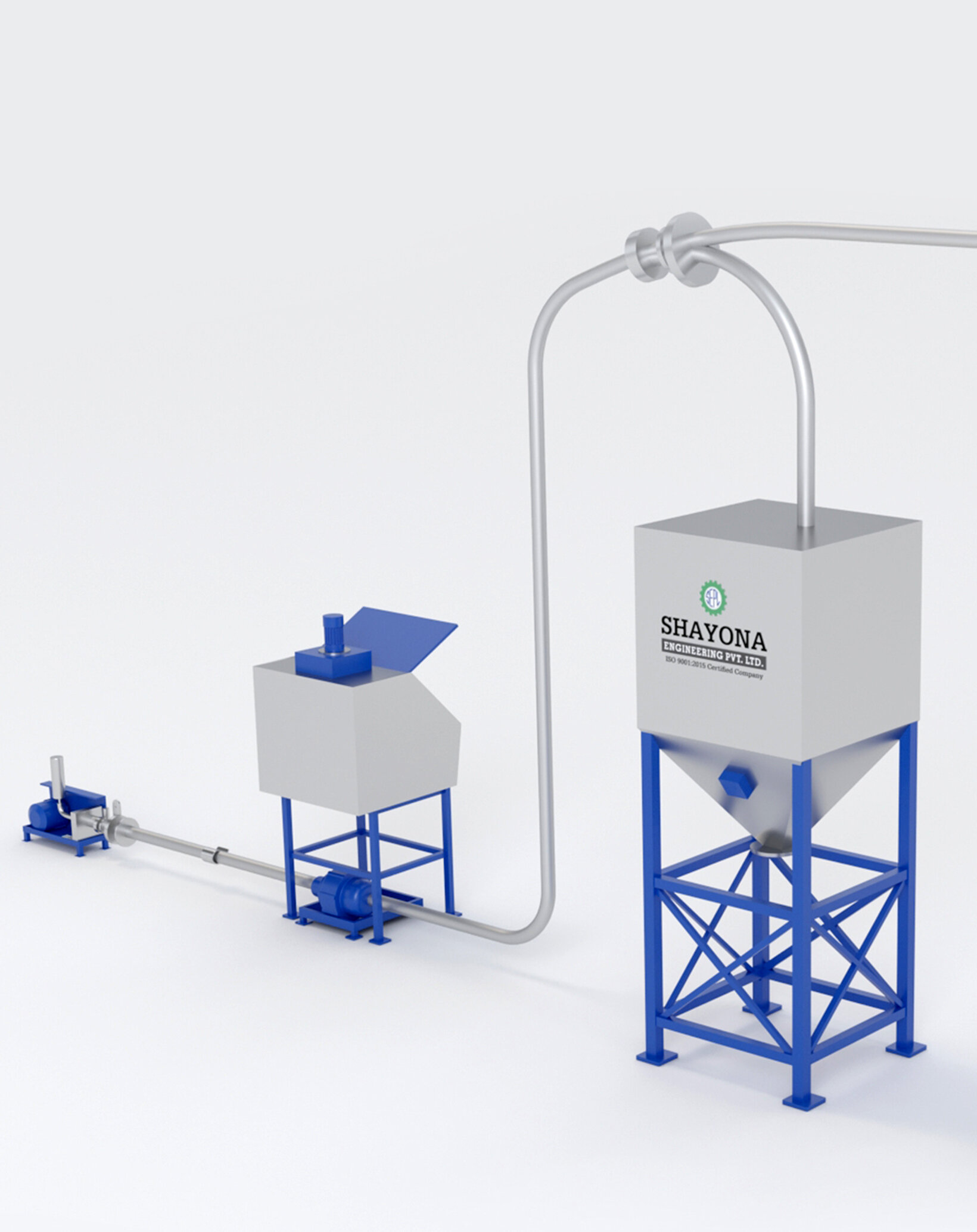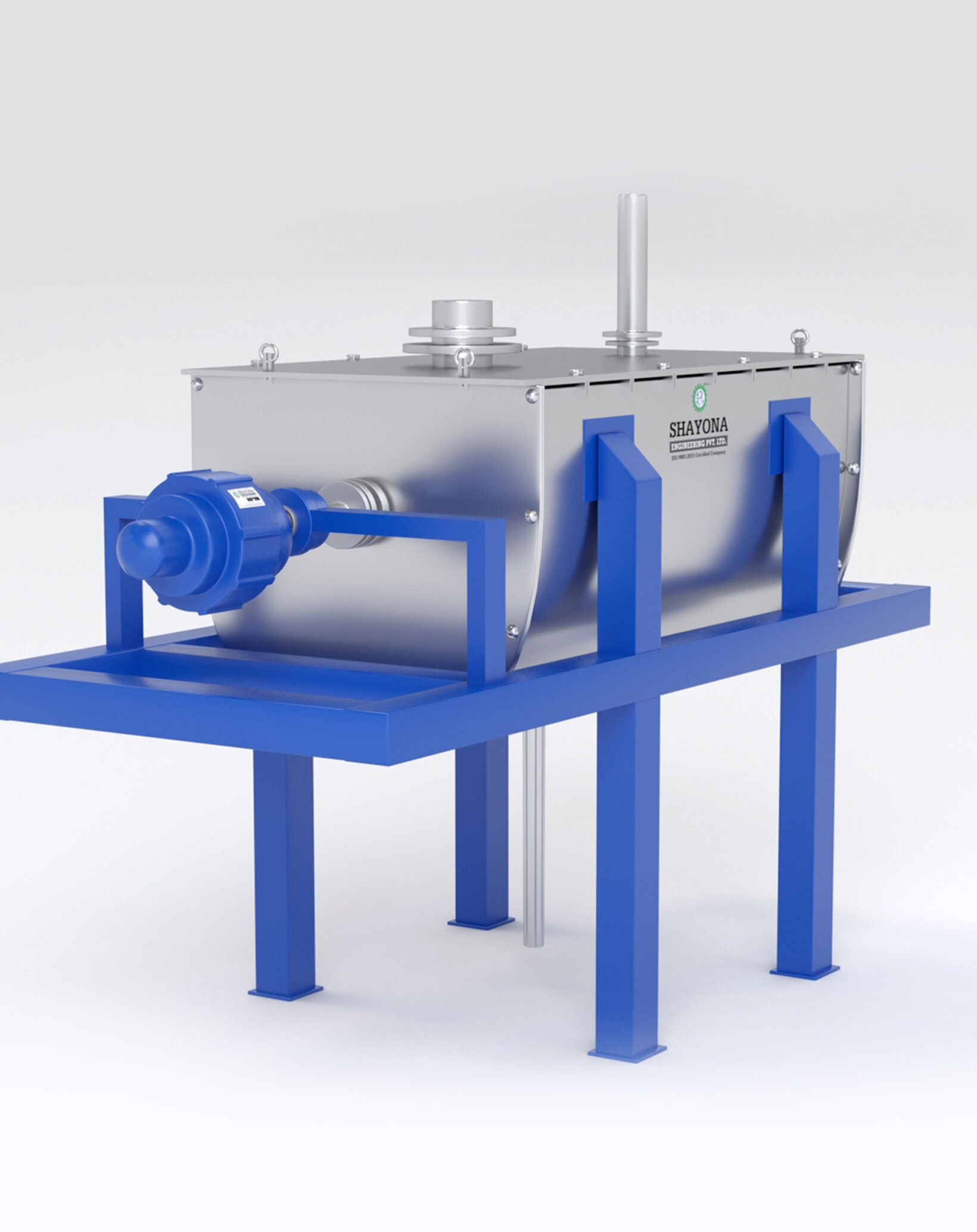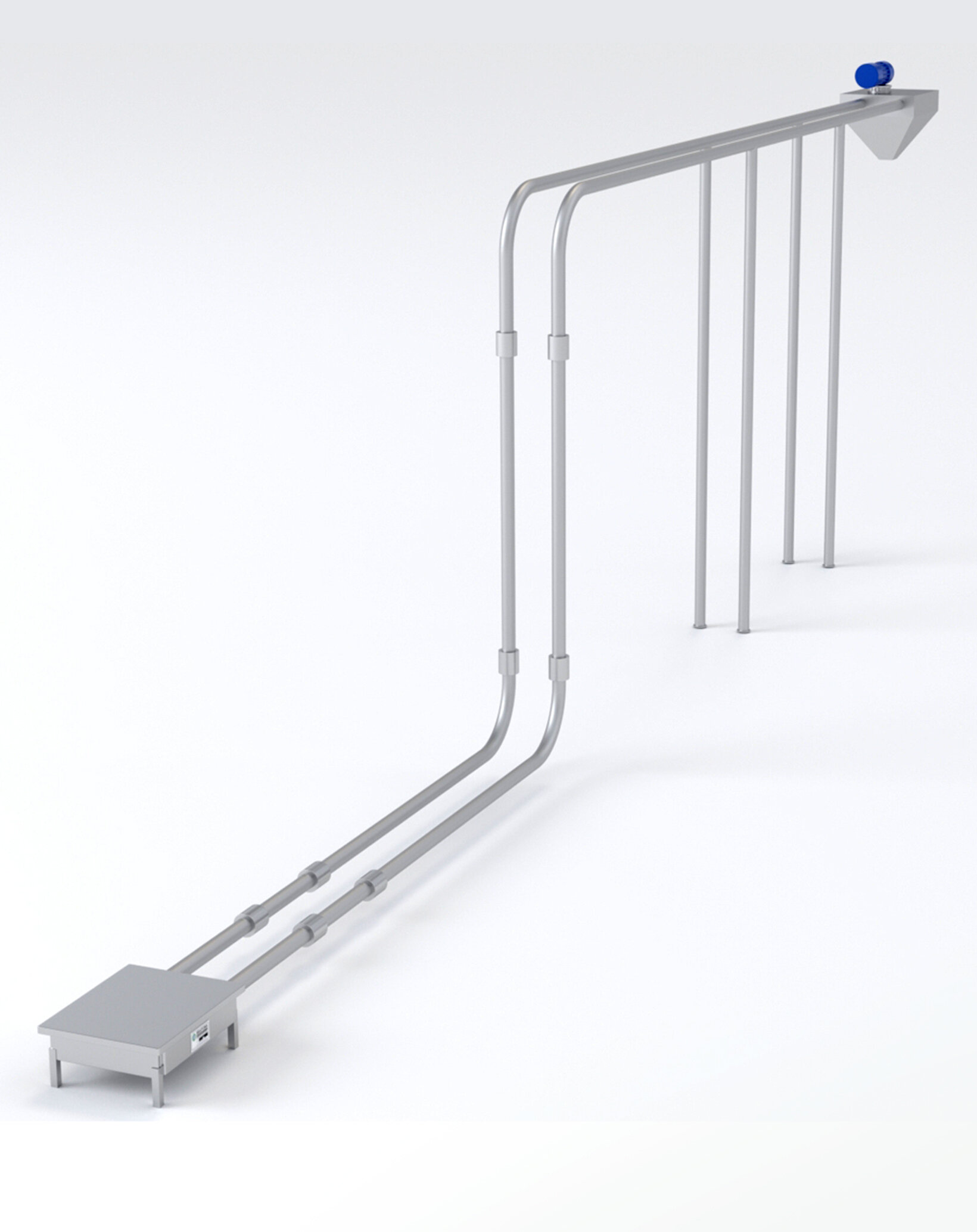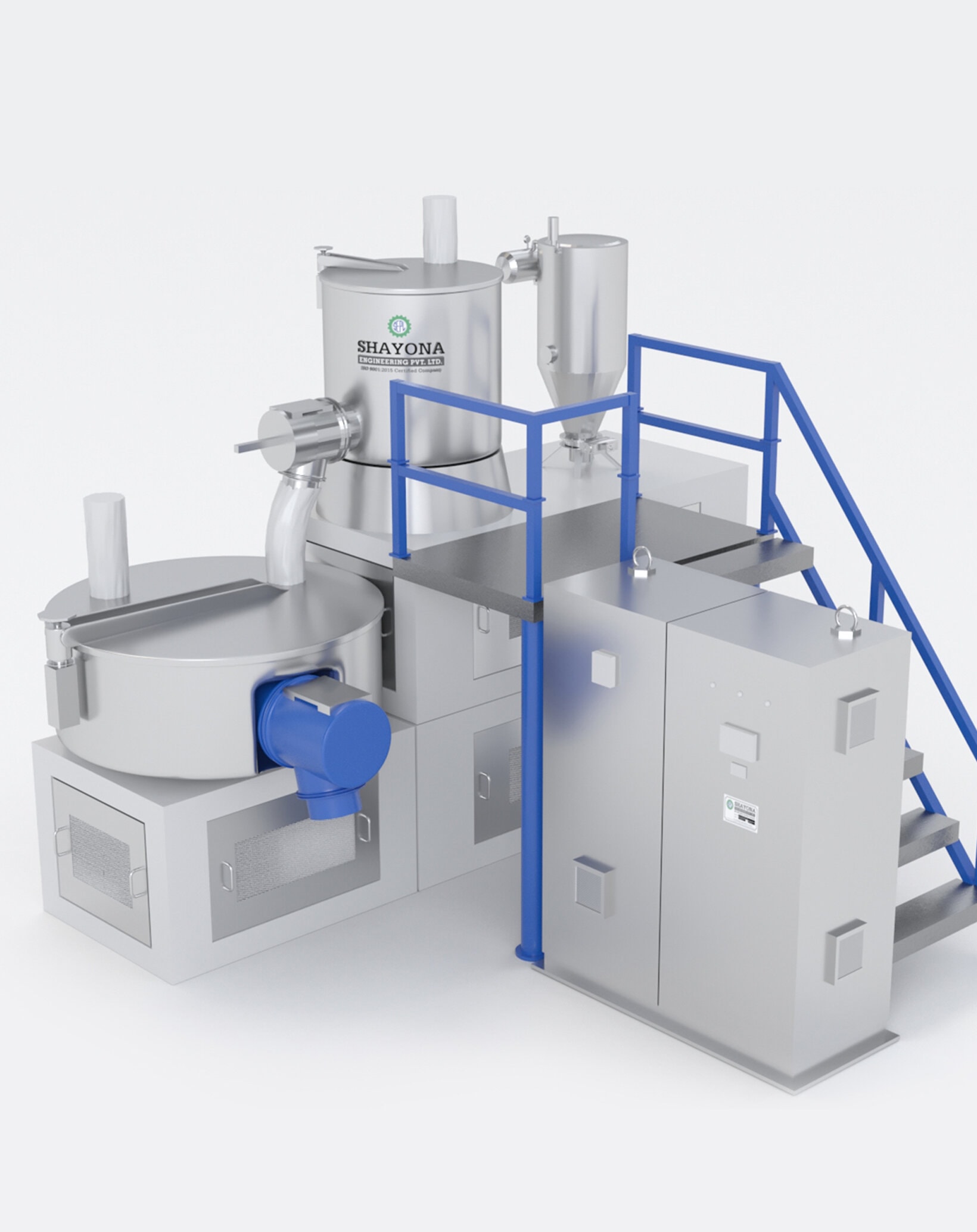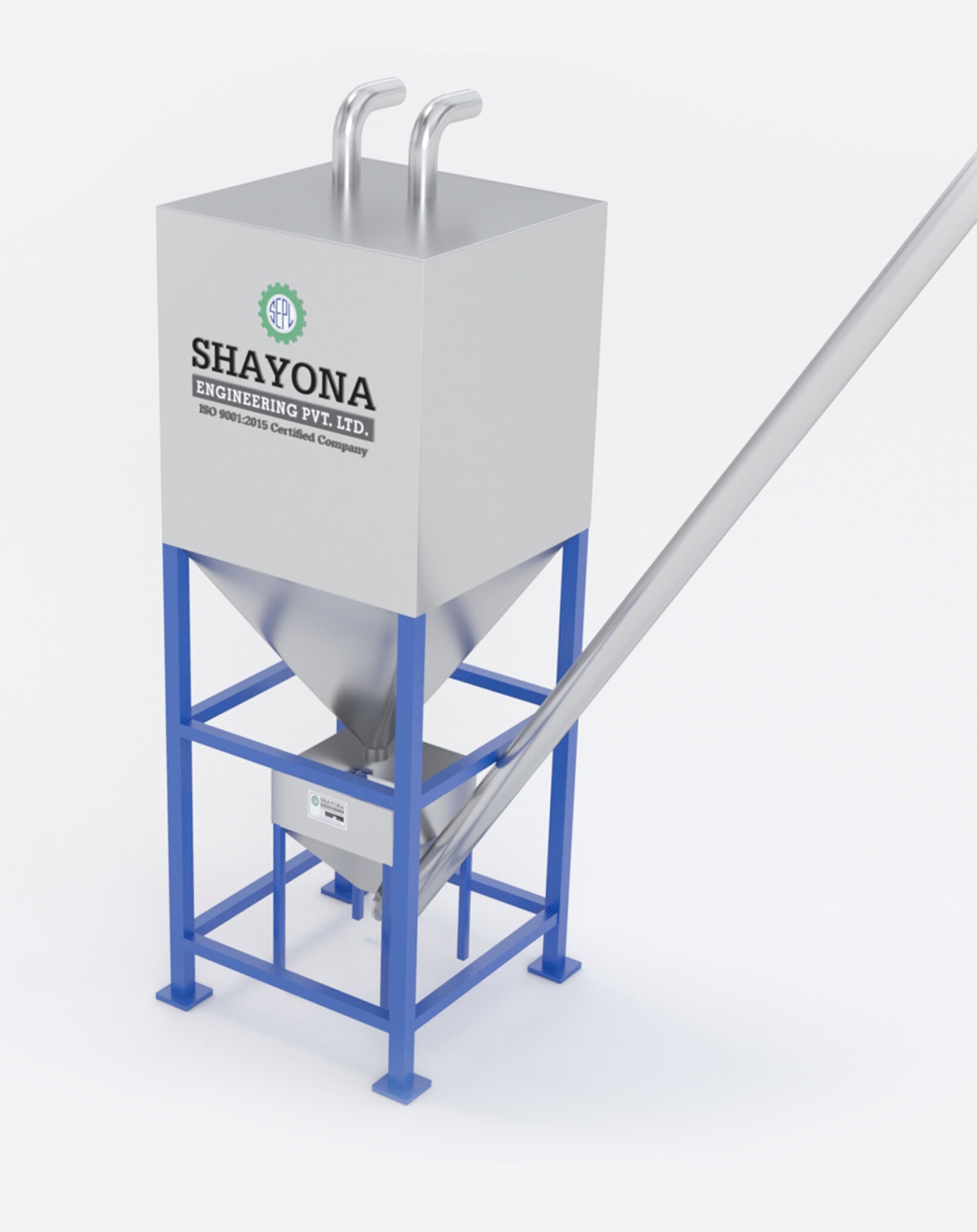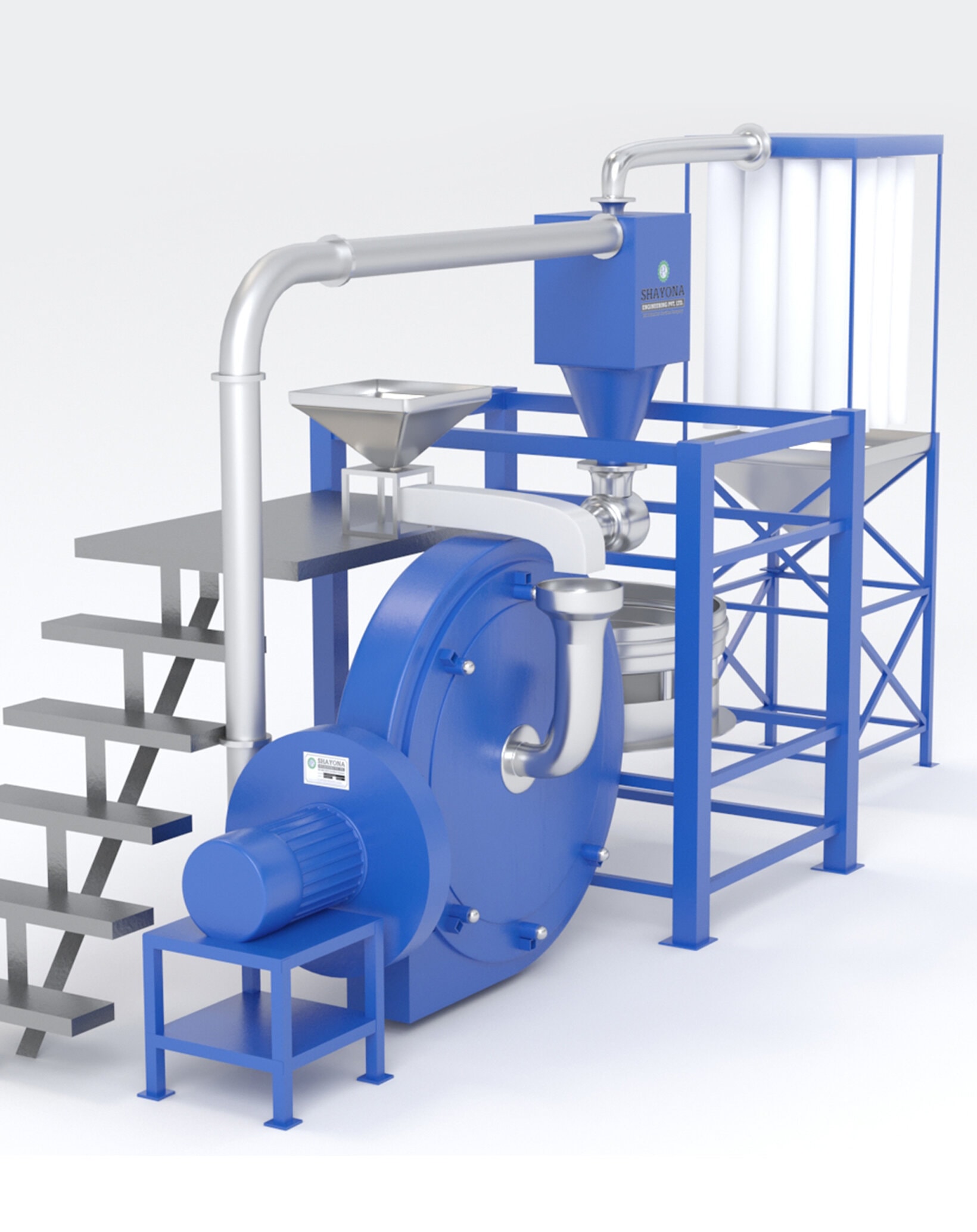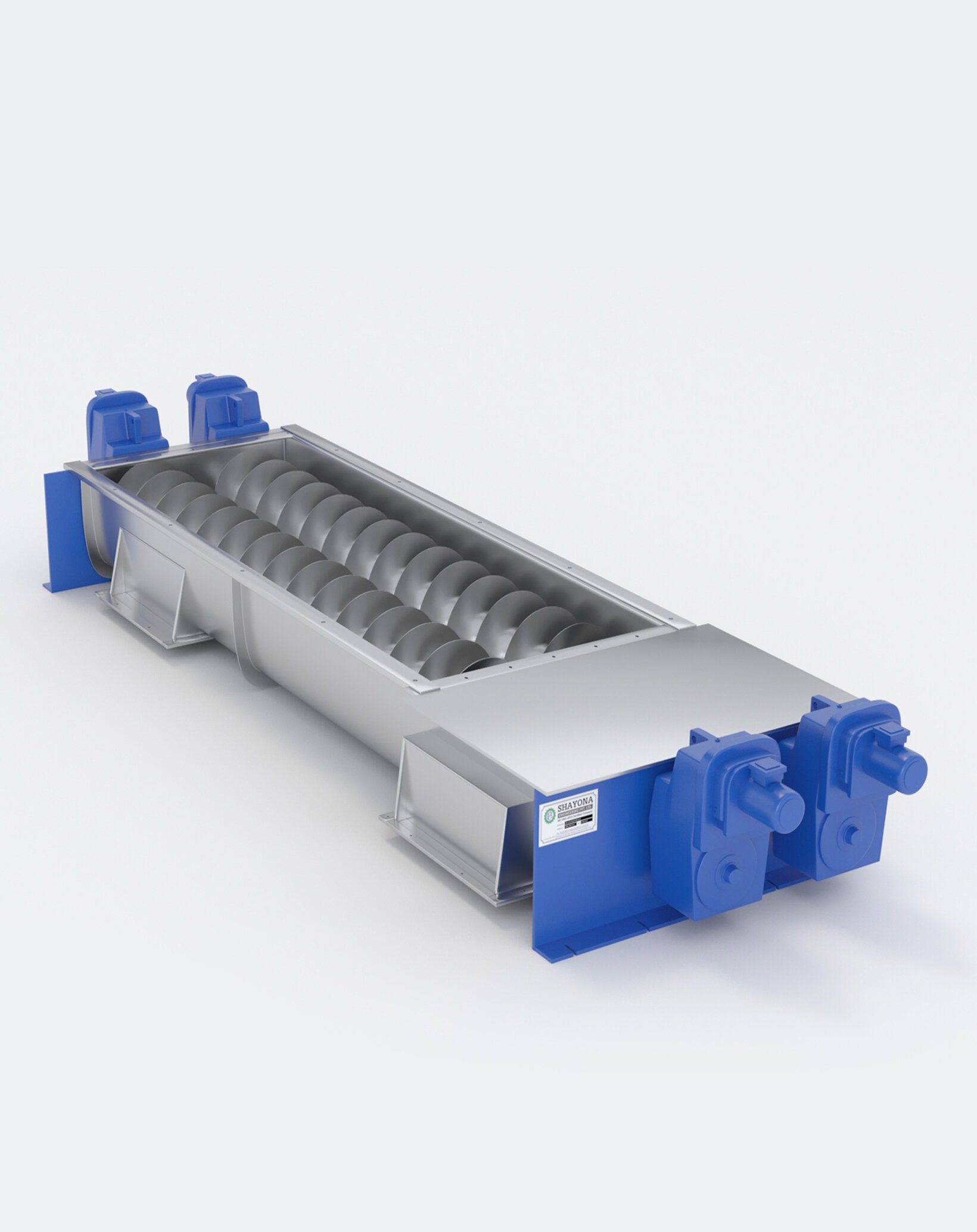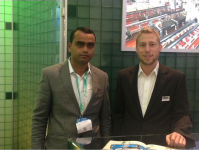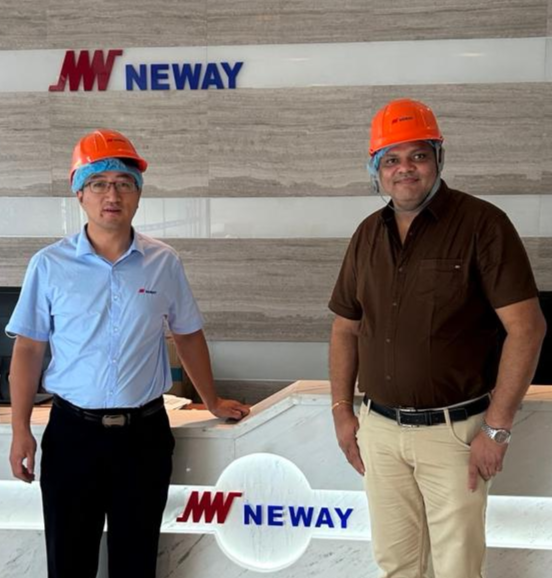Materials Process
Plastic extrusions are made from a variety of plastics and thermoplastics, including, among others: HDPE, LDPE, PETG, PVC, butyrate, polypropylene, and polystyrene.
Thermoplastics
A thermoplastic is a plastic material that, when exposed to sufficient heat, becomes plasticized. A plasticized thermoplastic can be shaped into useful products and retain the shape once cooled. Thermoplastics are highly valued for this quality, and they are also valued because they can be recycled at the end of their lifespans and reshaped by the same process.
HDPE
HDPE (high density polyethylene) is valued for its resistance to solvents, resistance to corrosion, high tensile strength, high strength-to-density ratio, durability and safety.
LDPE
LDPE (low-density polyethylene), is tough and flexible, with excellent resistance to many acids, alcohols, bases and esters. Manufacturers can extrude it as either translucent or opaque.
PETG
PETG (polyethylene terephthalate glycol-modified), known more commonly as polyester, can make rigid or semi-rigid plastic extruded parts. It is very lightweight, impact resistant and strong. In addition, it can act as a good barrier to gas, a fair barrier to moisture and a good barrier to alcohol, when treated.
PVC (Vinyl)
PVC (polyvinyl chloride), also called vinyl, is the world's third-most produced synthetic polymer. PVC is hard and strong, but has poor heat stability without the addition of a heat stabilizer. It also has good insulative properties and is resistant to acids, fats, alcohols, bases and salts. PVC extrusion, using both rigid PVC and flexible PVC, is popular for products including pipes, PVC angle, small diameter tubing, floor coverings and siding.
Butyrate
Butyrate is synthesized via the chemical modification of the natural polymer, cellulose. It is transparent, rigid, strong and durable, with excellent dimensional stability and high impact strength. It is also easy to extrude.
Polypropylene
Polypropylene is the world's second-most widely produced synthetic plastic; polyethylene is the first. It offers low density and high resistance to many acids, bases and chemical solvents. It is also thermal resistant.
Polystyrene
Polystyrene can be formed in a variety of containers, cutlery and packaging. While it is an inexpensive resin to purchase, it comes at a high cost to the environment. That is because it is slow to degrade, and has become an abundant form of litter.
Acrylic
Acrylic extrusions are characterized by their optical clarity and durability. They are, for these reasons, often well suited to use as tubing in chemical processing, because their contents can be easily visible when inspected by workers.
PROCESS DETAILS
The plastic extrusion process is very standardized, and there are few deviations between extrusion operations in terms of the basic principles of extrusion. Operating temperatures and output speeds may vary depending on the properties of the plastic material, but plastic extrusion processes resemble each other very closely aside from these differences.
Step 1
The extrusion process begins with a collection of raw plastic materials in a hopper suspended above a conveyance channel. These materials may be one plastic or a plastic composite.
Step 2
When a panel at the bottom of the hopper is removed or retracts, gravity directs the plastic into the channel.
Step 3
Inside the channel is a long shearing screw that forces the plastic down the channel as it turns. The friction caused by the turning of the screw causes the plastic to become molten. Some extruders feature supplementing electrical heating elements to aid in the melting of the plastic. By the time the plastic reaches the end of the channel, it is ready to be shaped.
Step 4
When the molten plastic reaches the extrusion die at the end of the channel, it is forced through, taking its shape as a result. The plastic emerges on the other side of the die as newly extruded plastic material.
Step 5
The plastic is quickly cooled, which causes it to harden and keep its shape.
Step 6
The extrusion can then be cut and prepared for shipment or sent for additional processing like labeling, painting, anti-static treating or another surface treatment.
DESIGN AND CUSTOMIZATION
When designing both standard and custom plastic extrusion products, manufacturers consider factors including best extrusion material, best manufacture process, die shape and die size. Material selection is based on matching up the required properties of an application with a material that exhibits those properties. The manufacture process, whether that be hot extrusion, cold extrusion or warm extrusion, is chosen based on the application requirements as well. Examples include tolerances, stress, production volume, etc.
Manufacturers offer a variety of custom extrusion options, include custom profile extrusion, custom tubing extrusion, custom plastic pipe extrusion, extrusion coating lamination.
MACHINERY USED
Plastic extrusion tooling is fairly straightforward. It involves the use of an extruder machine and dies.
Extruder
In this case, the extruder is composed of a hopper, where the material is held and heated, a conveyance channel, where the molten material is carried towards the die, and a shearing screw, which helps pressurize and push the material towards the die.
Die
At the end of the channel is a die, which is a specially-designed tool used to form raw materials into usable products. In the case of plastic extrusion, a die is a metal plate cut with a hole through which the plastic is forced.
Every die is different; they are specially designed to accommodate individual processes. The simplest possible die designs are nothing more than simple shapes. A circle-shaped produces a plastic rod, while a square-shaped die produces a continuous plastic square. Plastic profile extrusions like pipes, require dies fitted with special pins that allow hollow places to form. Textured plastic sheets like floor mats can also sometimes be produced by extruders. Plastic sheet dies would be flat with grooves to create the texture.
VARIATIONS AND SIMILAR PROCESSES
Extruding Standard Profiles
To make a plastic profile extrusion, manufacturers send resin through a barrel, which melts the plastics. Then, the molten plastic is molded by different set of dies, based on the requirement. For instance, to make hollow sections, manufacturers place a mandrel within the die. Similarly, for multi lumen tubes, they tool a couple of pins into the die, and as the molten plastic moves through the pins, it extrudes two holes in the product. Sometimes, manufacturers apply positive pressure to supplant the whole process and to adjust the size of the lumen.
Extrusion with Multiple Extruders (Coextrusion)
When they need to extrude plastic in multiples layers, manufacturers turn to a process called co-extrusion. Coextrusion allows for two or more types
of plastic resin to be mixed together, so that they can create a product with both of their qualities. To do so, manufacturers use multiple extruders
that melt the different resins at the same time and then deliver them together into a forked conveyance channel. Once on the channel, the different
materials are directed, mixed together steadily and delivered to a single die.
Extrusion for Making Plastic Shopping Bags
The method used for making shopping bags and plastic films is known as blow film extrusion. The method is similar to standard plastic extrusion,
but it employs a different type of die, which is shaped as a cylinder with an annular opening. As the molten material leaves the barrel of the extruder,
a couple of rolls pull the material, thus changing the gauge of the molten resin. Then, the die, which is tooled with an air outlet, blows air into the
cylindrical plastic profile, giving it its final shape. At the end, a cooling mechanism, typically a cooling ring, is affixed to cool the film. To regulate
the thickness of a product, the rate of revolution of the rolls is changed according the needs of the product.
Extrusion for Making Kernels
Some machines make plastic pellets by extruding different types of resin together. The machines follow the same procedure as that of standard
extrusion, however, the extruded products are not profiles or tubes, but rather beads, which act as a raw material for manufacturing processes.
Extrusion with 3D Printers
Thanks to the development of modern 3D printers, plastic can now be extruded into elaborate shapes and structures. 3D printing gives fabricators
the opportunity to fabricate any shape imaginable. In place of molten resin, this process uses a filament as feedstock.
Plastic Injection
Plastic extruded parts are considered a subsidiary of injection molded plastics, which are manufactured using another plastic molding technology,
plastic injection. During plastic injection molding, plastic pellets are heated until molten in a hopper, then injected into two hollow cavities. Then
the cavities clamp together under pressure, and left for a short amount of time to cool and solidify. Once solid, the two halves of the mold are
separated, and the plastic product is ejected out of the mold by a set of ejector rods or pins.
Plastic injection molding is chosen for both prototyping and mass production, because it can create tight tolerance products at high-volume runs.
BENEFITS
Efficiency
Plastic extrusion is high speed, high-volume and low-cost production. It is highly efficient, especially when compared with other molding methods.
Low Wastage
In plastic extrusion, the manufacturer can reuse plastic leftover after trimming or cutting again and again.
Low Cost
Because plastic extrusion machinery can run continuously, the process has low chances of inventory shortage, which keeps prices low. Moreover, cheap feedstock, reduced tooling costs, and low disposal expenditure mean this is the ultimate low-cost production method.
Flexibility
Plastic extrusion molding offers flexibility when products are required to have consistent cross-sectional profiles. Flexibility also comes in anotherform; manufacturers can easily tweak the process to produce plastic sheets or make products that mix plastic attributes.
Allows Post-Extrusion Alteration
Plastic takes time to cool down; it remains hot after it is removed from the precision extrusion machine. This makes it easy for manufacturers to
implement changes to the plastic after the completion of the extrusion process, using a variety of tools like rollers, shoes and dies.
Versatility
Plastic extrusion is an exceptionally versatile process, that allows for plastic extruded parts that have intricate shapes with different thicknesses,
hardness's, sizes, colors and textures; the only catch is the cross section needs to remain the same throughout.
THINGS TO CONSIDER
For the best results, you need to maintain stable head pressure, have consistent temperature at heating zones, and create uniform melt flow. Most
of the problems originate from these three factors. We've outlined other factors that you must consider below.
Variations in Concentration of Raw Materials
From homogeneity of the molten resin to the finish of the product, all quality is directly determined by the raw material. For thin gauge extrusion
especially, process conditions need to be stable, without any major pressure surges (pressure oscillations). In a standard setting, pressure
oscillations of ±50 psig are considered acceptable, but anything above that influences production. To achieve stable process conditions, avoid
variation in concentration of raw materials in terms of virgin and regrind blends.
Melt-bank Uniformity
The lack of melt bank uniformity can cause many variations in the product, ranging from spotty finish to irregular polishing patterns. To check the
presence of dull spots on the finished product, regulating the chrome-roll temperature is essential. The temperature should be kept high to
discourage freezing of the bank. The other way is to shorten the distance between the die-lip exit and the primary nipping rolls- the ideal distance
is 4 to 8 inches. However, there are factors that limit the distance between the die lip and primary rollers, such as area covered by the die, the die
deckles, and appendages. To avoid this problem, the die should be tooled with contours to reduce the cross-section area.
Design of Rolls
When production of thin gauge is involved, rolls should have capacity to manage high roll loads. For this purpose, special rollers known as spherical
tapered rollers are considered suitable. However, when spherical tapered rollers are installed in an extruder, additional equipment, such as bearing
journals and roll shafts, also need to be designed appropriately in the extruder.
Roll Deflection
The common problem that all fabricators face is deflection of the roll. To rectify this problem, three solutions are available. The first involves a
crowned roll, which has a pre-ground camber. This technique, however, limits the range of the production because the dimension and geometry of
the camber remain fixed. The second method involves counter-bending rolls, however, just like the first method, the technique limits the production
window. The last solution involves roll skewing. The roll skewing method, unlike the first two solutions, is highly versatile and removes deflection
in a wide range of operations.
For more advice or for plastic extrusion services, reach out to a reliable contract manufacturer. Not sure where to start? No worries! To make your
life easier, we've provided a list of our top plastic extrusion company picks. Find it by scrolling near to the top of the page. The best way to find the
right manufacturer for you is by browsing their respective sites, picking out three or four you like, and then reaching out to each of them with your
questions and specifications. Be on the lookout for the one that provides the best customer service. Remember, the right manufacturer will work
with you to create affordable solutions that adhere to all your requirements; there's no reason to settle for subpar service. Good luck!
 Pipe Extrusion Engineering Specialist
Pipe Extrusion Engineering Specialist
 Pipe Extrusion Engineering Specialist
Pipe Extrusion Engineering Specialist
 Pipe Extrusion Engineering Specialist
Pipe Extrusion Engineering Specialist
 Pipe Extrusion Engineering Specialist
Pipe Extrusion Engineering Specialist
 Pipe Extrusion Engineering Specialist
Pipe Extrusion Engineering Specialist
 Pipe Extrusion Engineering Specialist
Pipe Extrusion Engineering Specialist
 Pipe Extrusion Engineering Specialist
Pipe Extrusion Engineering Specialist
 Pipe Extrusion Engineering Specialist
Pipe Extrusion Engineering Specialist
 Pipe Extrusion Engineering Specialist
Pipe Extrusion Engineering Specialist
 Pipe Extrusion Engineering Specialist
Pipe Extrusion Engineering Specialist
 Pipe Extrusion Engineering Specialist
Pipe Extrusion Engineering Specialist
 Pipe Extrusion Engineering Specialist
Pipe Extrusion Engineering Specialist
 Pipe Extrusion Engineering Specialist
Pipe Extrusion Engineering Specialist
 Pipe Extrusion Engineering Specialist
Pipe Extrusion Engineering Specialist
 Pipe Extrusion Engineering Specialist
Pipe Extrusion Engineering Specialist
 Pipe Extrusion Engineering Specialist
Pipe Extrusion Engineering Specialist
 Pipe Extrusion Engineering Specialist
Pipe Extrusion Engineering Specialist
 Pipe Extrusion Engineering Specialist
Pipe Extrusion Engineering Specialist
 Pipe Extrusion Engineering Specialist
Pipe Extrusion Engineering Specialist
 Pipe Extrusion Engineering Specialist
Pipe Extrusion Engineering Specialist
 Pipe Extrusion Engineering Specialist
Pipe Extrusion Engineering Specialist
 Pipe Extrusion Engineering Specialist
Pipe Extrusion Engineering Specialist
 Pipe Extrusion Engineering Specialist
Pipe Extrusion Engineering Specialist
 Pipe Extrusion Engineering Specialist
Pipe Extrusion Engineering Specialist
 Pipe Extrusion Engineering Specialist
Pipe Extrusion Engineering Specialist
 Pipe Extrusion Engineering Specialist
Pipe Extrusion Engineering Specialist
 Pipe Extrusion Engineering Specialist
Pipe Extrusion Engineering Specialist
 Pipe Extrusion Engineering Specialist
Pipe Extrusion Engineering Specialist
 Pipe Extrusion Engineering Specialist
Pipe Extrusion Engineering Specialist
 Pipe Extrusion Engineering Specialist
Pipe Extrusion Engineering Specialist
 Pipe Extrusion Engineering Specialist
Pipe Extrusion Engineering Specialist
 Pipe Extrusion Engineering Specialist
Pipe Extrusion Engineering Specialist
 Pipe Extrusion Engineering Specialist
Pipe Extrusion Engineering Specialist
 Pipe Extrusion Engineering Specialist
Pipe Extrusion Engineering Specialist
 Pipe Extrusion Engineering Specialist
Pipe Extrusion Engineering Specialist
 Pipe Extrusion Engineering Specialist
Pipe Extrusion Engineering Specialist
 Pipe Extrusion Engineering Specialist
Pipe Extrusion Engineering Specialist
 Pipe Extrusion Engineering Specialist
Pipe Extrusion Engineering Specialist
 Pipe Extrusion Engineering Specialist
Pipe Extrusion Engineering Specialist
 Pipe Extrusion Engineering Specialist
Pipe Extrusion Engineering Specialist
 Pipe Extrusion Engineering Specialist
Pipe Extrusion Engineering Specialist
 Pipe Extrusion Engineering Specialist
Pipe Extrusion Engineering Specialist
 Pipe Extrusion Engineering Specialist
Pipe Extrusion Engineering Specialist
 Pipe Extrusion Engineering Specialist
Pipe Extrusion Engineering Specialist
 Pipe Extrusion Engineering Specialist
Pipe Extrusion Engineering Specialist
 Pipe Extrusion Engineering Specialist
Pipe Extrusion Engineering Specialist
 Pipe Extrusion Engineering Specialist
Pipe Extrusion Engineering Specialist
 Pipe Extrusion Engineering Specialist
Pipe Extrusion Engineering Specialist
 Pipe Extrusion Engineering Specialist
Pipe Extrusion Engineering Specialist
 Pipe Extrusion Engineering Specialist
Pipe Extrusion Engineering Specialist
 Pipe Extrusion Engineering Specialist
Pipe Extrusion Engineering Specialist
 Pipe Extrusion Engineering Specialist
Pipe Extrusion Engineering Specialist
 Pipe Extrusion Engineering Specialist
Pipe Extrusion Engineering Specialist
 Pipe Extrusion Engineering Specialist
Pipe Extrusion Engineering Specialist
 Pipe Extrusion Engineering Specialist
Pipe Extrusion Engineering Specialist
 Pipe Extrusion Engineering Specialist
Pipe Extrusion Engineering Specialist
 Pipe Extrusion Engineering Specialist
Pipe Extrusion Engineering Specialist
 Pipe Extrusion Engineering Specialist
Pipe Extrusion Engineering Specialist
 Pipe Extrusion Engineering Specialist
Pipe Extrusion Engineering Specialist
 Pipe Extrusion Engineering Specialist
Pipe Extrusion Engineering Specialist
 Pipe Extrusion Engineering Specialist
Pipe Extrusion Engineering Specialist
 Pipe Extrusion Engineering Specialist
Pipe Extrusion Engineering Specialist
 Pipe Extrusion Engineering Specialist
Pipe Extrusion Engineering Specialist
 Pipe Extrusion Engineering Specialist
Pipe Extrusion Engineering Specialist
 Pipe Extrusion Engineering Specialist
Pipe Extrusion Engineering Specialist
 Pipe Extrusion Engineering Specialist
Pipe Extrusion Engineering Specialist
 Pipe Extrusion Engineering Specialist
Pipe Extrusion Engineering Specialist
 Pipe Extrusion Engineering Specialist
Pipe Extrusion Engineering Specialist
 Pipe Extrusion Engineering Specialist
Pipe Extrusion Engineering Specialist
 Pipe Extrusion Engineering Specialist
Pipe Extrusion Engineering Specialist
 Pipe Extrusion Engineering Specialist
Pipe Extrusion Engineering Specialist
 Pipe Extrusion Engineering Specialist
Pipe Extrusion Engineering Specialist
 Pipe Extrusion Engineering Specialist
Pipe Extrusion Engineering Specialist
 Pipe Extrusion Engineering Specialist
Pipe Extrusion Engineering Specialist
 Pipe Extrusion Engineering Specialist
Pipe Extrusion Engineering Specialist
 Pipe Extrusion Engineering Specialist
Pipe Extrusion Engineering Specialist
 Pipe Extrusion Engineering Specialist
Pipe Extrusion Engineering Specialist
 Pipe Extrusion Engineering Specialist
Pipe Extrusion Engineering Specialist
 Pipe Extrusion Engineering Specialist
Pipe Extrusion Engineering Specialist
 Pipe Extrusion Engineering Specialist
Pipe Extrusion Engineering Specialist
 Pipe Extrusion Engineering Specialist
Pipe Extrusion Engineering Specialist
 Pipe Extrusion Engineering Specialist
Pipe Extrusion Engineering Specialist
 Pipe Extrusion Engineering Specialist
Pipe Extrusion Engineering Specialist
 Pipe Extrusion Engineering Specialist
Pipe Extrusion Engineering Specialist
 Pipe Extrusion Engineering Specialist
Pipe Extrusion Engineering Specialist
 Pipe Extrusion Engineering Specialist
Pipe Extrusion Engineering Specialist
 Pipe Extrusion Engineering Specialist
Pipe Extrusion Engineering Specialist
 Pipe Extrusion Engineering Specialist
Pipe Extrusion Engineering Specialist
 Pipe Extrusion Engineering Specialist
Pipe Extrusion Engineering Specialist
 Pipe Extrusion Engineering Specialist
Pipe Extrusion Engineering Specialist
 Pipe Extrusion Engineering Specialist
Pipe Extrusion Engineering Specialist
 Pipe Extrusion Engineering Specialist
Pipe Extrusion Engineering Specialist
 Pipe Extrusion Engineering Specialist
Pipe Extrusion Engineering Specialist
 Pipe Extrusion Engineering Specialist
Pipe Extrusion Engineering Specialist
 Pipe Extrusion Engineering Specialist
Pipe Extrusion Engineering Specialist
 Pipe Extrusion Engineering Specialist
Pipe Extrusion Engineering Specialist
 Pipe Extrusion Engineering Specialist
Pipe Extrusion Engineering Specialist



